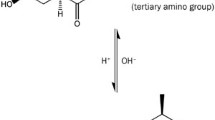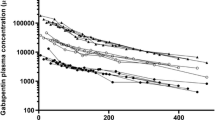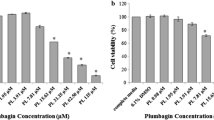Abstract
Objective
To investigate the absorption and transport mechanism of magnolol in Caco-2 cell model.
Methods
A human intestinal epithelial cell model Caco-2 cell in vitro cultured was applied to study the absorption and transport of magnolol, the effects of time, donor concentration, P-gp inhibitor verapamil, pH and temperature on the absorption and transport of magnolol were investigated. The determination of magnolol was performed by high performance liquid chromatography, then the values of apparent permeability coefficient (P app ) and P ratio Basolateral-to-Apical (BL-to-AP)/Apical-to-Basolateral (AP-to-BL) were calculated.
Results
In Caco-2 cell model, comparing the amounts of transport of AP-to-BL and BL-to-AP, the latter was larger. At the same donor concentration, either the amounts of transport of AP-to-BL or BL-to-AP increased with increase in donor concentration and incubation time. Verapamil could significantly improve the amounts of transport of AP-to-BL. The transport of AP-to-BL and BL-to-AP depended on temperature, and there was no significant effect of pH on the transport of AP-to-BL.
Conclusion
Magnolol could be transported through the intestinal mucosa via a passive diffusion mechanism primarily, coexisting with a carrier-mediated transport, at the same time, the efflux mechanism could be involved.
Similar content being viewed by others
References
Pharmacopoeia Commission of the People’s Republic of China. Chinese Pharmacopoeia I. Beijing: China Medical Science Press; 2010:285–286.
Marin GH, Mansilla E. Apoptosis induced by Magnolia Grandiflora extract in chlorambucil-resistant B-chronic lymphocytic leukemia cells. J Cance Res Ther 2010;6:463–465.
Lin SP, Tsai SY, Lee Chao PL, Chen YC, Hou YH. Pharmacokinetics, bioavailability, and tissue distribution of magnolol following single and repeated dosing of magnolol to rats. Planta Med 2011;77:1800–1805.
Hidalgo IJ, Raub TJ, Borchardt RT. Characterization of the human colon carcinoma cell line (Caco-2) as a model system for intestinal epithelial permeability. Gastroenterology 1989;96:736–749.
Fujikawa M, Ano R, Nakao K, Shimizu P, Akamatsu M. Relationships between structure and high-throughput screening permeability of diverse drugs with artificial membranes: application to prediction of Caco-2 cell permeability. Bioorgan Med Chem 2005;13:4721–4732.
Artursson P, Karlsson J. Correlation between oral drug absorption in humans and apparent drug permeability coefficients in human intestinal epithelial (Caco-2) cells. Biochem Bioph Res Co 1991;175:880–885.
del Amo EM, Heikkinen AT, Mönkkönen J. In vitro-in vivo correlation in p-glycoprotein mediated transport in intestinal absorption. Eur J Pharm Sci 2009;36:200–211.
Kannan P, John C, Zoghbi SS, Halldin C, Gottesman MM, Innis RB. Imaging the function of P-glycoprotein with radiotracers: pharmacokinetics and in vivo applications. Clin Pharmacol Ther 2009;86:368–377.
Smalley J, Kadiyala P, Xin BM, Balimane P, Olah T. Development of an on-line extraction turbulent flow chromatography tandem mass spectrometry method for cassette analysis of Caco-2 cell based bi-directional assay samples. J Chromatogr B 2006;830:270–277.
Zhu ZB, Makhija SK, Lu B, Wang M, Rivera AA, Preuss M, et al. Transport across a polarized monolayer of Caco-2 cells by transferrin receptor-mediated adenovirus transcytosis. Virology 2004;325:116–128.
Hilgers AR, Smith DP, Biermacher JJ, Day JS, Jensen JL, Sims SM, et al. Predicting oral absorption of drugs: a case study with a novel class of antimicrobial agents. Pharm Res 2003;8:1149–1155.
Artursson P, Borchardt RT. Intestinal drug absorption and metabolism in cell cultures: Caco-2 and beyond. Pharm Res 1997;14:1655–1658.
Lai SK, Wang YY, Hanes J. Mucus-penet rat ing nanoparticles for drug and gene delivery to mucosal tissues. Adv Drug Deliver Rev 2009;61:158–171.
Author information
Authors and Affiliations
Corresponding author
Additional information
Supported by the National Key Technology Program (No. 2006BAI11B08-04)
Rights and permissions
About this article
Cite this article
Wu, Ag., Zeng, B., Huang, Mq. et al. The absorption and transport of magnolol in Caco-2 cell model. Chin. J. Integr. Med. 19, 206–211 (2013). https://doi.org/10.1007/s11655-012-1098-7
Received:
Published:
Issue Date:
DOI: https://doi.org/10.1007/s11655-012-1098-7




